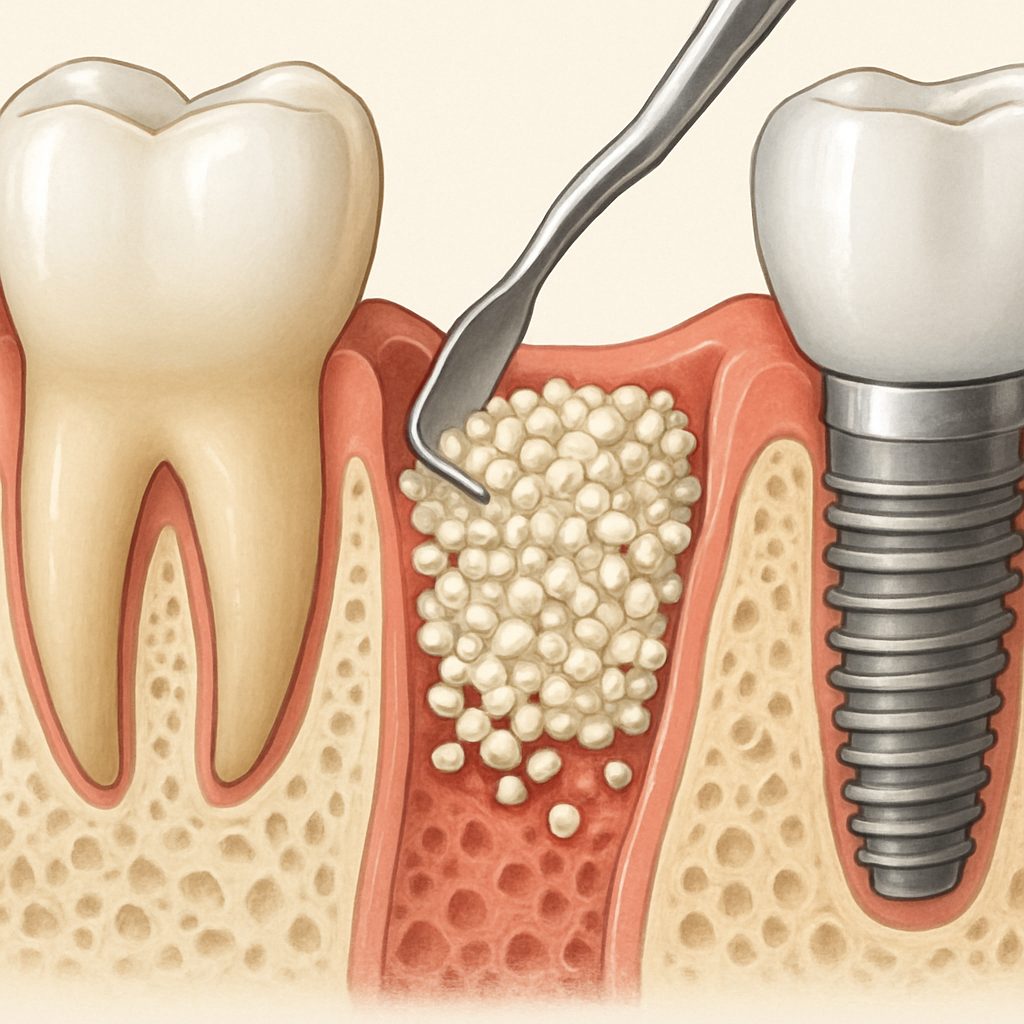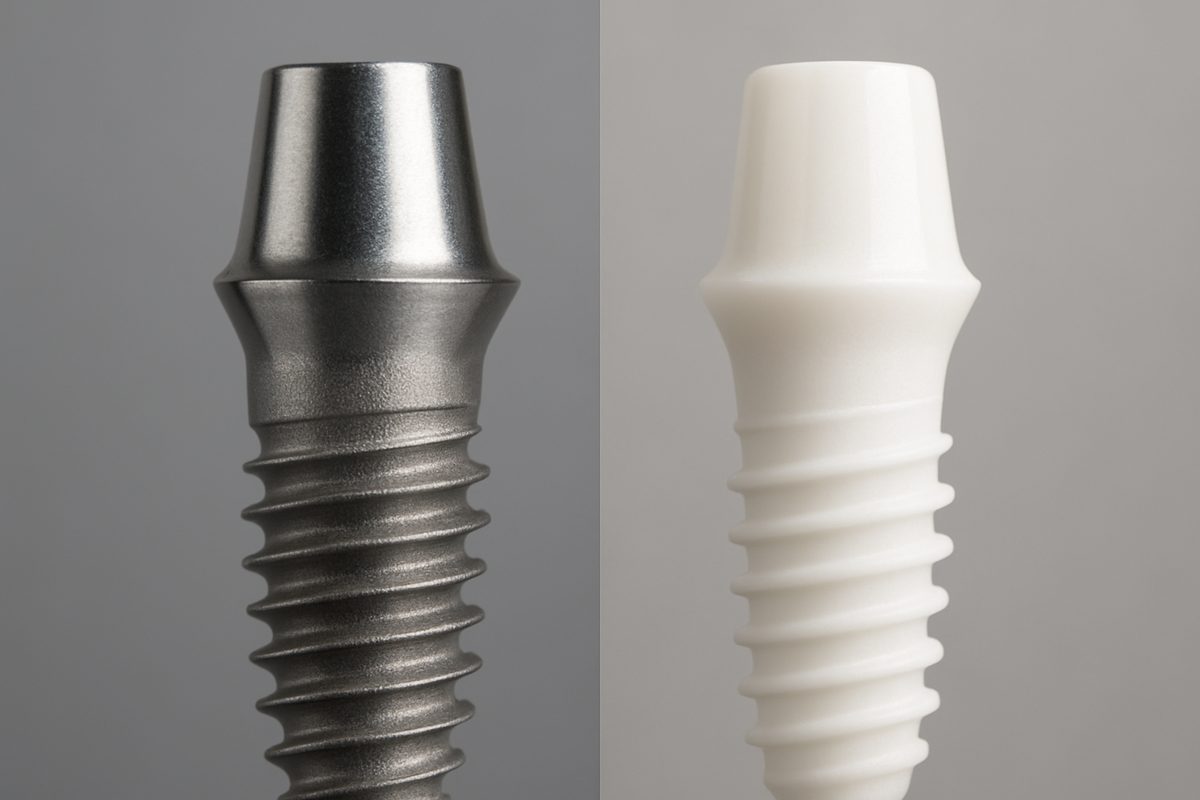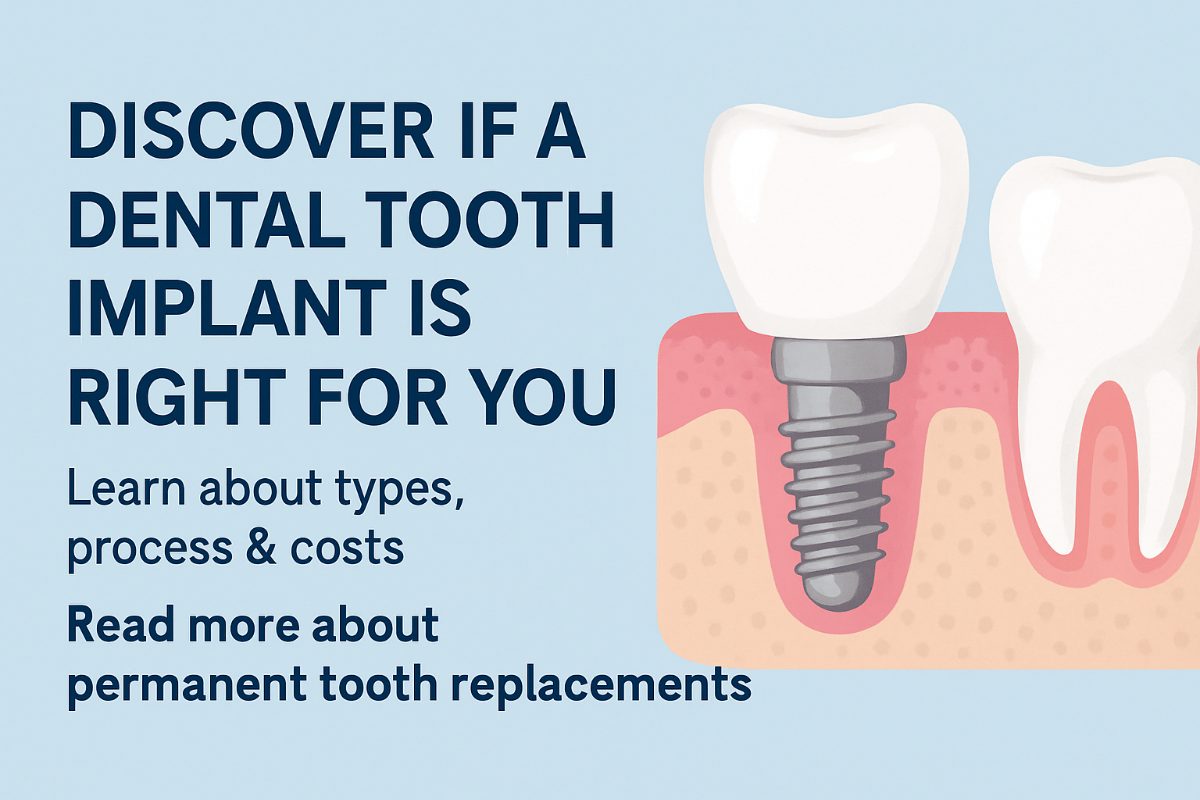Oral Surgery Blog - Statesboro & Swainsboro, GA
Tips, Facts, And The
Latest In Dentistry

What To Know About Bone Grafting For Dental Implants

Bone grafting for dental implants helps rebuild jawbone so implants have strong support. This short guide explains why grafts are often needed, common graft types, what to expect before and after surgery, and how grafts affect implant timing. If you’re thinking about implants, reading this will help you ask the right questions at your consult.
Why bone grafting is often needed before dental implants
How bone loss happens
When a tooth is lost, the jawbone that once held it begins to shrink. That happens naturally over months and years. Infection, long-term missing teeth, or trauma can speed up the bone loss. Less bone means less material to hold an implant in place.
Signs you may need a graft
You may need bone grafting for dental implants if your jaw is thin, soft, or if the sinus cavity is too close to the upper back teeth. A failed extraction that left a damaged socket can also rule out placing an implant without grafting first. Your surgeon will check bone thickness and density with imaging to decide.
Common types of bone grafting for dental implants
Socket preservation
Socket preservation is done right after a tooth is removed. Graft material fills the empty socket to keep the shape and volume for a future implant. It reduces the amount of bone loss that normally follows an extraction.
Ridge augmentation
Ridge augmentation builds up a thin jaw ridge so there is enough width to place an implant. The surgeon adds graft material and often uses a membrane to shape and protect the new bone while it heals.
Sinus lift
A sinus lift raises the sinus floor in the upper jaw to create more bone height for implants. This is common when the back upper teeth have been missing and the sinus has expanded downward.
Autograft vs allograft vs xenograft
Graft materials include:
- Autograft: bone taken from your own body. Best for healing but requires a second surgical site.
- Allograft: donor bone from a human source. No second site and good success rates.
- Xenograft: animal-derived bone that acts as a scaffold for new bone growth.
Each option has pros and cons. Your surgeon will explain which is best for your case.
What to expect during the bone grafting procedure
Before: evaluation and 3D imaging
Expect a clinical exam and a CBCT 3D scan. These images show bone height and width and help the surgeon plan where to place grafts and future implants. This step is critical for precise, predictable results.
During: anesthesia and the surgical steps
Bone grafting can be done with local anesthesia, IV sedation, or general anesthesia depending on the case and your comfort. The surgeon places the graft material, secures it with membranes or screws if needed, and closes the site. The procedure time varies but is usually done as an outpatient visit.
After: healing, care, and common side effects
Normal recovery includes some swelling, mild pain, and light bruising for a few days. Your surgeon will give pain control instructions, antibiotics if needed, and guidance on oral hygiene. Follow-up visits check healing and, when ready, plan implant placement.
How bone grafting affects implant timing and success
Staged grafting vs same-day implant placement
Sometimes a graft and implant are placed at the same time if the site is stable. Other times the graft must heal first; that’s called staged grafting. The choice depends on bone quality and the type of graft.
Typical healing timelines and success rates
Healing can take from three to nine months depending on the graft type and site. Bone grafting for dental implants in Statesboro, GA or bone grafting for dental implants in Swainsboro, GA generally improves long-term implant stability and has high success when done by experienced surgeons.
Risks, benefits, and alternatives
Benefits
Bone grafting for dental implants provides better support for implants, improves chewing function, and helps implants last longer. It also enables natural-looking restorations.
Risks and possible complications
Risks include infection, graft failure, or need for additional surgery. Most complications are treatable; careful planning and follow-up reduce the chance of problems.
Alternatives to grafting
If grafting isn’t an option, alternatives may include short implants, bridges, or removable dentures. Each has benefits and trade-offs your surgeon will review with you.
Why choose East Georgia Center for Oral & Facial Surgery
East Georgia Center for Oral & Facial Surgery offers board-certified oral surgeons and advanced 3D imaging to plan bone grafting for dental implants in Statesboro, GA and bone grafting for dental implants in Swainsboro, GA. The team provides office-based anesthesia options and experience with All-on-4® restorations, same-day extractions, and complex grafting techniques. Their focus is precise surgical planning and patient comfort.
Next steps: what to ask at your consultation
Bring these questions to your visit:
- Do I need bone grafting for dental implants?
- Which graft type is best for my situation?
- What is the expected timeline and cost?
- What sedation options are available?
- What are your success rates with grafting and implants?
Ready for a personalized plan? Schedule a consult to get a 3D evaluation and a clear treatment timeline for bone grafting for dental implants in Statesboro, GA or bone grafting for dental implants in Swainsboro, GA.




